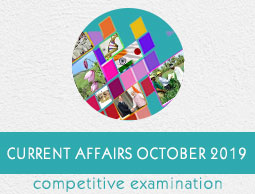
- Appointments
- Awards
- Bills & Acts
- Books & Authors
- Committees
- Deaths
- Defence
- Economic
- Environment
- Banking and Finance
- Important Days
- International
- Miscellaneous
- National
- Persons in News
- Places in News
- Regional
- Reports
- Resignations
- Science & Technology
- Sports
- October 2019 - Exams Resources
- Current Affairs - Quiz
- Current Affairs - Test
- Current Affairs - PDF
Current Affairs October 2019 - Reports
1 - Jaipur ranked as the cleanest railway station in India
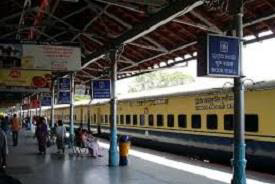
Jaipur Junction has topped the tally among 720 stations covered all over the country under Swachh Rail, Swacch Bharat cleanliness assessment 2019. Jodhpur bagged second place. The suburban station of Jaipur- Durgapura has been placed third.
Seven stations under North Western Railway (NWR) namely Jaipur, Jodhpur, Durgapura, Gandhinagar Jaipur, Suratgarh, Udaipur City and Ajmer found place in first 10 most clean railway stations of the country. Jaipur scored highest 931.75 marks out of 1000. NWR also maintained top rank consecutively for second year among all 16 railway zones with an average of 848.764.
2 - Consumer Confidence Survey, September 2019 by RBI

The Reserve Bank of India released the results of the September 2019 round of its Consumer Confidence Survey (CCS). The central bank conducted the survey across 5192 households in 13 major cities. The Consumer confidence dipped to six-year low in September as sentiment around employment, income and discretionary spending declined.
The Current Situation Index (CCI) fell into 89.4 in September from 95.7 recorded in the July round of survey. 47.9% said the general economic situation had worsened.
3 - Tamil Nadu tops the list for most cancer claims under PMJAY
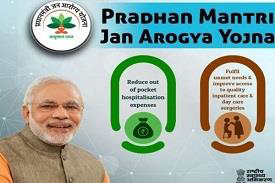
According to a data of the Union Health Ministry, the Pradhan Mantri Jan Arogya Yojana (PMJAY) has funded the treatment of 90,000 cancer patients through 1.8 lakh hospital admissions. Tamil Nadu, with 40,056 cases, tops the state where the most cancer patients availed treatment under PMJAY, followed by Kerala (22,000), Madhya Pradesh (19,455), Chhattisgarh (15,997) and Gujarat (14,380).
The data also shows that every year there are 11.57 lakh new cancer patients in India and 7.84 lakh cancer deaths. At any given point, there are 22.5 lakh Indians living with cancer.
4 - Kerala tops Niti Aayogs School Education Quality Index
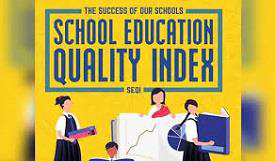
Kerala has topped the list among 20 states in the 'School Education Quality Index' (SEQI) report released by Niti Aayog. Rajasthan was second in the list while Karnataka secured third place.
NITI Aayog has prepared this index based on the data of 2016-17. The index emphasizes the efforts of schools to increase the learning ability of students. The list has been categorised into three parts Large States, Small States and Union Territories. The top 3 bottom states are Punjab, Jammu and Kashmir and Uttar Pradesh.
5 - India ranks 68th on global competitiveness index
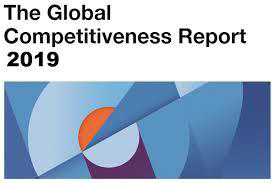
India slipped down ten places to be ranked 68th in the annual Global Competitiveness Index 2019 from 58th position in 2018. The major reason for the fall in Indias rank is due to improvements witnessed by several other economies.
Singapore is first in the list followed by USA, Hong Kong, Netherlands and Switzerland. China was ranked at the 28th spot. The report is prepared by Geneva-based World Economic Forum (WEF).
6 - Prevalence of diabetic retinopathy in India is 16.9%
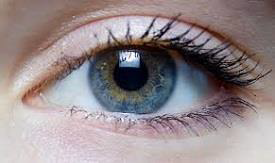
The Union Health Ministry's first National Diabetes and Diabetic Retinopathy Survey (2015-19) has revealed that the prevalence of Diabetic Retinopathy (DR) is 16.9% while the prevalence of sight-threatening DR is 3.6%.
The prevalence of diabetes in India has remained at 11.8% in the last four years while the prevalence of Known Diabetes (KD) 8.0% and new diabetes cases was 3.8%. Prevalence of blindness among diabetics was 2.1% and visual impairment was 13.7%.
7 - Karnataka topped first ever India Innovation Index launched by NITI Aayog
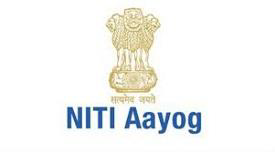
The first-ever India Innovation Index launched by NITI Aayog in New Delhi to promote competitiveness among the states was topped by Karnataka. Tamil Nadu is second and Maharashtra is on the third position followed by Telangana, Haryana, Kerala, Uttar Pradesh, West Bengal, Gujarat and Andhra Pradesh. Jharkhand finished last in the list of 17 major states.
Among the North-Eastern states, Sikkim and among Union Territories Delhi has occupied the top spot. The aim of innovation index is to move states from competitive populism to competitive good governance.
8 - India's livestock population increased to over 535 million
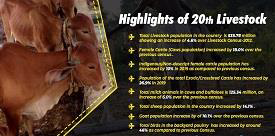
The Department of Animal Husbandry and Dairying released the 20th Livestock Census -2019. India's livestock population has increased to over 535 million showing an increase of 4.6% over Livestock Census-2012. As per the livestock census, cow population is over 145 million, increasing by 18% over the previous census.
West Bengal reported the highest increase of over 23% in livestock population, followed by Telangana, Andhra Pradesh, Bihar and Madhya Pradesh. The 20th Livestock Census was carried out in about 6.6 lakh villages and 89 thousand urban wards across the country.
9 - Forbes India Rich List 2019 unveiled
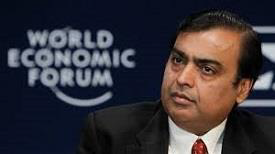
Forbes India Rich List 2019 was released by business magazine Forbes. The list was topped by Reliance Industries chairman Mukesh Ambani with net worth of $51.4 billion followed by Ports tycoon Gautam Adani with $15.7bn at 2nd place and Hinduja Brothers with $15.6bn at 3rd place.
Steal tycoon Savitri Jindal was one of the women among the top list at 20th rank with $5.8bn. Mukesh Ambani remains the richest Indian for the 12th year in a row. The net worths of more than half the list members fell. In all, nine members from last years ranks dropped off.
10 - India slipped to rank 102 in Global Hunger Index 2019
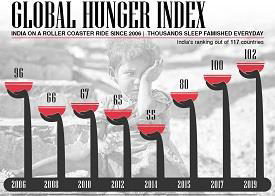
India slipped from 95th rank in 2018 to 102nd in 2019 out of 117 qualifying countries, with a score of 30.3 on 2019 Global Hunger Index (GHI). Global Hunger Index (GHI) is an international tool designed to track hunger and malnutrition level that falls into serious category, based on 4 indicators.
Seventeen countries, including Belarus, Ukraine, Turkey, Cuba and Kuwait, shared the top rank with GHI scores of less than five. Four countries namely Madagascar, Chad, Yemen and the Central African Republic were placed under alarming hunger category.
11 - India ranked 82 in the 2019 World Giving Index

The World Giving Index (WGI) is an annual report published by the Charities Aid Foundation (CAF) to rank countries in the world according to how charitable they are. India was ranked 82nd among 128 countries. USA topped the index followed by Myanmar, New Zealand and Australia.
Key findings were as follows
Worldwide, more than 2.5 billion people helped a stranger over the past decade.
Globally, nearly 20% of all adults, volunteer with Sri Lanka reporting the highest rate of volunteering in the world.
People from Myanmar are the most likely to have donated money to charity.
12 - UNICEF released The State of Worlds Children Report 2019

2019 edition of The State of the Worlds Children (SOWC) examined the issue of children, food and nutrition, providing a fresh perspective on a rapidly evolving challenge.
Key Findings were
149 million children aged under 5 still suffer from stunting and almost 50 million from wasting.
340 million children suffer from the hidden hunger of deficiencies of vitamins and minerals.
Rates of overweight are rising rapidly.
The number of stunted children has declined in all continents, except in Africa.
Many adolescents consume highly processed foods: 42% drink carbonated soft drinks at least once a day.
13 - World Bank released South Asia Economic Focus, Making (De) Centralization Work Report
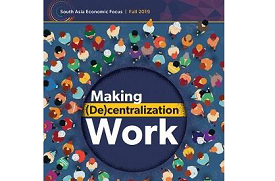
World Bank released South Asia Economic Focus, Making (De) Centralization Work Report 2019. The South Asia Economic Focus is a biannual economic update presenting recent economic developments and a near-term economic outlook for South Asia.
Key Findings are as given below
Global GDP growth is decelerating, while trade and industrial production are stagnating.
Current account deficits have declined and food price inflation is picking up.
The expected modest recovery to 6.3 percent in 2020 and 6.7 percent in 2021 is tentative.
In South Asia, a lack of geospatial data on expenditure and development outcomes remains a major constraint.
14 - National Blindness and Visual Impairment Survey 2019
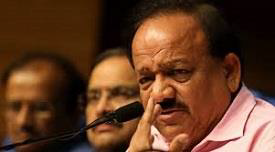
The National Blindness & Visual Impairment Survey India 2015-2019 was released by Union Health Minister Harsh Vardhan. It estimated that blindness has come down to 0.36% from 1% in 2006-2007since the last survey.
Key findings of the survey are
Visual impairment has come down by 51.9% to 2.55% as a compared to 2010.
Maximum prevalence of blindness was seen in age group of above 80 (11.6%).
Prevalence of blindness was lowest in Kerala and visual impairment was lowest in Manipur.
Uttar Pradesh had the highest prevalence in both categories.
15 - India jumped 14 places on World Bank's Ease of Doing business ranking
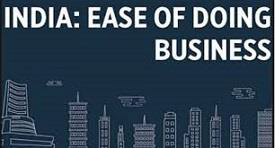
India has jumped 14 places to take the 63rd position in the World Banks Ease of Doing Business 2020 survey among 190 countries. Last year, India jumped 23 places to reach 77th position.
Indias ranking has improved 79 places - to 63 in 2019 from 142 in 2014 - a record for a major economy. The World Bank acknowledged India's significant improvements registered in resolving insolvency, dealing with Construction Permits, Registering Property, trading across Boards and Paying Taxes indicators.
16 - BPRD releases Data on Police Organizations (DoPO 2018)
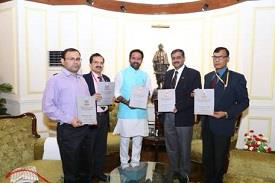
Union Minister of State for Home Affairs G. Kishan Reddy has released the Bureau of Police Research and Developments flagship publication Data on Police Organizations (DoPO 2018) in New Delhi.
Major highlights of the DoPO 2018
There has been an increase of 19,686 Police personnel in the sanctioned strength of the State Police and 16,051 in the strength of CAPFs
There has been 20.95% increase in the strength of Woman Police which brings the total percentage of women in the Indian Police to 8.73%.
The overall Police Population Ratio at the state level stood at 192.95 policemen per lakh population.
Police Stations have increased from 15579 to 16422.
17 - IIT-Bombay tops QS India University Rankings
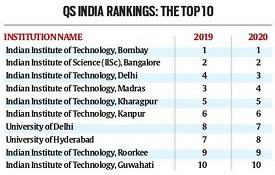
According to the QS India University Rankings 2020, Indian Institute of Technology (IIT), Bombay, has emerged as the best higher education institute in India. It is the second consecutive year IIT, Bombay has topped the ranking.
The Indian Institute of Science (IISc), Bengaluru, is at number two and IIT-Delhi at number three. IIT-Madras is at number four, followed by IIT-Kharagpur and IIT-Kanpur, respectively. University of Delhi, University of Hyderabad, IIT Roorkee and IIT Guwahati complete the top ten list respectively.
18 - NCRB released Crime in India Report 2017
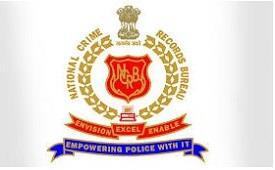
The National Crime Records Bureau (NCRB) released its 2017 data for crime in India. According to the report, cybercrimes in India almost doubled in 2017 though it accounted for less than a percentage (0.43%) or 21,796 cases of a total of 50,07,044 cognizable crimes in 2017.
According to the report, 3.59 lakh cases of crime against women were reported in the country. Uttar Pradesh topped the list with 56,011 cases followed by Maharashtra with 31,979 cases and West Bengal 30,002 in cases of crime against women.
19 - Credit Suisses Global Wealth Report 2019
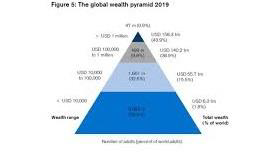
The Credit Suisse Group, a Switzerland-based multinational investment bank, has released the 10th edition of its annual Global Wealth Report. The report tracks both the growth and distribution of wealth.
Just 47 million people accounting for merely 0.9% of the worlds adult population owned $158.3 trillion, which is almost 44% of the worlds total wealth. China has overtaken the United States this year to become the country with most people in the top 10% of global wealth distribution.
20 - Three Indian-origin CEOs in Harvard Business Review's top 10 best-performing CEOs
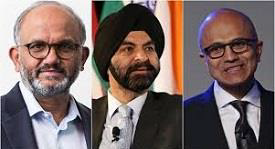
Three Indian-origin CEOs have been featured in a list of world's top 10 best-performing chief executives. 'The Best-Performing CEOs in the World, 2019' list compiled by the Harvard Business Review (HBR) features 100 CEOs and has been topped by American technology company NVIDIA's CEO Jensen Huang.
On the 6th spot is Adobe CEO Shantanu Narayen, followed by MasterCard CEO Ajay Banga at 7th spot and Microsoft chief Satya Nadella at 9th spot. Ranking has been based not only on financial performance but also on environmental, social, and governance (ESG) ratings.